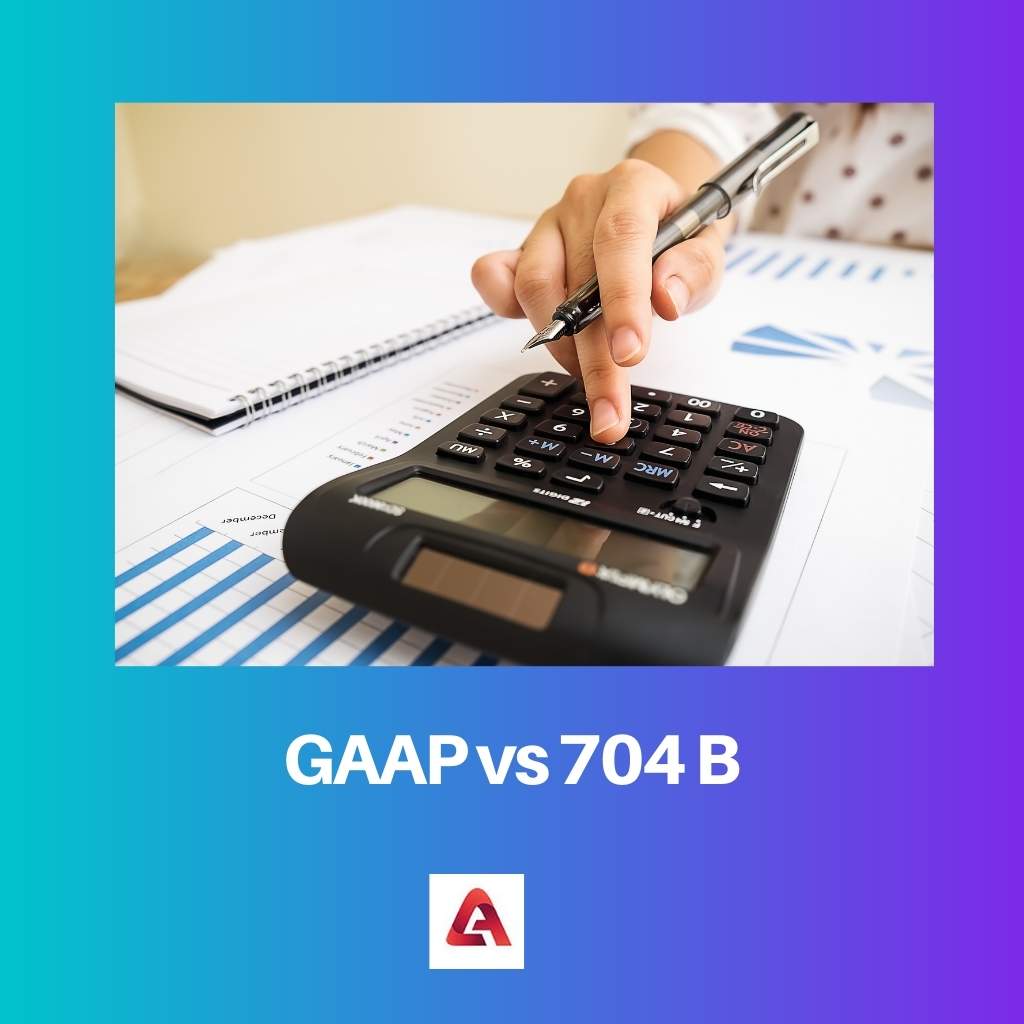The most critical aspect of partnership taxation is keeping track of partners’ capital accounts appropriately. The financial position of the company and taxing parties must be disclosed appropriately by all the tax experts.
Key Takeaways
- GAAP (Generally Accepted Accounting Principles) provides a standard framework for financial reporting, while Section 704(b) refers to US tax regulations for allocating partnership income, deductions, and credits.
- GAAP emphasizes the importance of consistency and comparability, while 704(b) focuses on economic effect and tax equity among partners.
- GAAP applies to all entities preparing financial statements, while 704(b) applies specifically to partnerships and their tax allocations.
GAAP vs 704 B
GAAP stands for Generally Accepted Accounting Principles, which businesses have to obey to guarantee that the financial statements for evaluating companies for investment purposes are uniform. 704 B is a section that shows the balance of a partner aligning with federal income tax principles.

The Financial Accounting Standards Board (“FASB”) mandates the use of GAAP capital accounting. A partnership that is not openly traded yet is registered is not subject to GAAP.
Many partnerships, on the other hand, are required to maintain GAAP-compliant records and accounts by auditors, lenders, or other regulatory bodies.
A common requirement in partnership agreements is to divide taxable income and losses in the same way. Section 704(b) income allocations are not equal to dividends from the partnership.
Comparison Table
| Parameters of Comparison | GAAP | 704 B |
|---|---|---|
| Balance indication | Accounting board guidelines are followed | Shows balance of a partner in line with federal income tax principles |
| Responsibility | GAAP does not apply to a partnership that is not publicly traded but is still registered. | Partners have an equal stake in the partnership’s profits and losses. |
| necessity | Many partnerships are obliged to keep documents. | They need to split taxable income and losses equally |
| Usage | financial statements are used to evaluate firms for investment purposes are uniform | It shows the importance of partner allocation in the economy |
| Market value | an asset’s fair market value is only changed in certain circumstances. | There is no requirement to determine the fair market value |
What is GAAP?
Businesses adhere to Generally Accepted Accounting Principles (GAAP) to guarantee that financial statements used to evaluate companies for investment purposes are uniform.
Many businesses use GAAP guidelines when preparing financial reports for investors and other stakeholders.
if a new partner enters a partnership business, the present partners may wish to restate their book capital account and reflect their involvement in asset appreciation that occurred before the new partner joined the firm for commercial goals.
Management has the last word on whether an investor’s ownership position meets the standards for “substantial influence” (equity) or “control.” These approaches are not optional (consolidation).
For example, if the primary owner of the company moves, the GAAP financial records could reflect the FMV. A transaction that needs purchase accounting modifications may occur.

What is 704 B?
Books prepared according to GAAP standards are based on financial accounting concepts. 704 (b) books, on the other hand, are used to demonstrate the economic significance of partner allocation.
You have to include the FMV in your capital account under section 704 if a partner provides a house for your partnership firm (b).
If the property is dispersed, the distributor’s capital account should be reduced by the fair market value of the distributed item.
Section 704 requires the books to be kept, but no precise estimate of fair market value is required. If the parties cannot agree and the transaction is an arm’s length transaction, the laws allow all partners to agree on the fair market value.
The impact of GAAP capital accounting on the tax base is minimal, and Sec. 704(b) capital accounts are commonly used as a starting point for these other accounts in practice.

Main Differences Between GAAP and 704 B
- GAAP is used to guarantee uniformity in financial statements. In contrast, 704 (b) is used to highlight the importance of partner allocation.
- The fair market value of an asset can only be modified under specified situations according to GAAP accounting. Whereas Section 704 does not require the determination of fair market value, the books must be kept (b).
- https://heinonline.org/hol-cgi-bin/get_pdf.cgi?handle=hein.journals/taxtm92§ion=22
- https://onlinelibrary.wiley.com/doi/abs/10.1506/car.24.3.1

An insightful and comprehensive analysis of the differences between GAAP and 704 B. Very helpful!
Absolutely! Understanding these differences is crucial in the world of partnership taxation.
I couldn’t agree more! This article is indeed very enlightening.
I found the descriptions of GAAP and 704 B to be overly complicated, making it difficult to fully comprehend the topic.
Agreed, simplifying complex concepts is essential in educational articles.
It would be beneficial to have more simplified explanations to cater to a wider audience.
The authors have done an excellent job of highlighting the nuances between GAAP and 704 B, making it easier to grasp.
Yes, the comparisons drawn were intellectually stimulating.
Absolutely, the detailed comparisons truly add depth to the understanding of this subject.
An informative article that provides valuable insights into GAAP and 704 B.
While the content itself is informative, it could benefit from a more engaging presentation.
I see what you mean. A more engaging tone could enhance the overall appeal.
The detailed comparison table was enlightening and clarified many of the points discussed in the article.
Absolutely, it provided a clear summary of the key distinctions between GAAP and 704 B.
I found the table to be an effective tool in facilitating understanding.
This discussion on GAAP and 704 B has reached a commendable level of depth and clarity.
Absolutely, the article has succeeded in achieving a commendable level of lucidity.
An intellectually stimulating read that offers a deep-dive into partnership taxation principles.